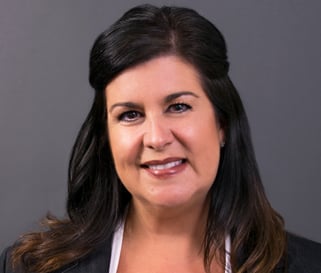If you’re like many financial institutions, tradition can be a powerful force that gives you the edge over your competition. But what happens when “the way we’ve always done it” just doesn’t cut it anymore? Or, when your competition starts to do things the same or better than you?
Too often, change comes too late. We wait for the pain of NOT changing —or the fear of missing out —before we actually get around to doing things differently. And by that time, it’s too late. You’ve missed your chance to lead the pack, and now you’re playing catch-up.
The trick is to be proactive. But true change management isn’t as easy as a checklist. It requires thinking critically about challenges that are unique to your change, organization, and culture. These challenges come in two varieties: operational challenges and people challenges.
Identify operational challenges.
Operational challenges crop up when the goals for your institution don’t match up with the methods or metrics you’re using to get there. Here are some examples:
- Your institution needs to increase account openings, but you haven’t broken your goal down into specific numbers for your frontline staff.
- You want to provide great service, but when account holders call, they’re on hold for 5 minutes or more.
- You expect your front line to provide exceptional service, but specific service expectations have not been set, nor are they managed to.
- You don’t have in-branch marketing that aligns with your sales goals, so you rely solely on your frontline staff and all-or-none interactions.
Take a moment and ask yourself if there is anywhere in your organization where your goals aren’t aligned with your processes. Then, read on about the other barrier institutions encounter on the way to change.
Understand people challenges.
Even with the best policies in place, you’ll need buy-in from everyone on your staff – including your leadership team. Here are two scenarios to consider:
- You’ve tried to implement a change several times and — for whatever reason —it hasn’t quite taken hold. Your staff is now cynical about your new plans, and they’ve adopted the mentality of “if we don’t do it, it will eventually go away.”
- You have ostensible buy-in from your leadership team (they actually want change!), but none of them come out of their offices to “walk the walk” and ask your staff how the change is going on a regular basis.
Solution: change the way you change.
Examining your obstacles to change is the first step in a powerful change-making process called ADKAR (like “sidecar” —it’s an essential companion to change). ADKAR stands for awareness, desire, knowledge, ability, and reinforcement. Here’s what ADKAR means and how it can transform your institution.
- Awareness – Most of us have a vague sense when things aren’t going the way we want them to, and when what we’re doing isn’t going to work. Whether it’s little pains you experience on a daily basis or a larger vision that isn’t being met, pay attention to how you feel about the way your institution is going. Try to get specific about what you’d like to see different.
- Desire – Where awareness is strong, desire to support and participate in change is also strong. Don’t be shy about your feeling that your institution can improve. Positive passion is a contagious force that can recruit your staff and fellow executives —and you’ll need both in order to get the transformation you seek.
- Knowledge – What do you need to change? This is where change starts to get difficult. We all have to be willing to admit from time to time that maybe, just maybe, we don’t have the solution for the situation. But, if you have faith that someone out there does, it’s suddenly a much easier admission to make. Don’t try to be the one who has all the answers. Be the one who doggedly asks the right questions to learn what changes your institution needs.
- Ability – You may know exactly what to do, but due to lack of skills, resources, or experience, you just can’t make it happen. Very frustrating. But don’t let that frustration sink your plans for change. Instead, ask for help outside your institution.
- Reinforcement – Change doesn’t happen overnight, but it sure can evaporate overnight. Like a garden, your change needs to be tended to daily. Contrary to popular opinion, new habits take 66 days —over two months —to catch on. And that’s for individuals. You’re trying to steer an entire institution. To get the most out of your change, don’t focus merely on whether it’s working or not. View every day as an opportunity to learn something new about yourself, your institution, and the industry.
Where are you in the ADKAR process? Ask yourself, “are we stuck in the desire phase without the knowledge to move forward, or do we have the knowledge and lack the ability?” Furthermore, do you know someone who can truly, impartially evaluate your institution and help you find the path to success? If not, consider reaching out today. Having an objective partner to serve as a sounding board at the very least is vital to effecting long-term change for your institution.







